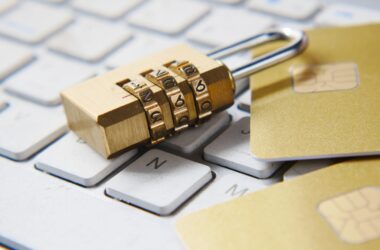Introduction
In today’s hyper-connected digital age, our digital identity plays an essential role in how we navigate and interact with the online world. Whether it’s shopping online, connecting with friends on social media, or accessing essential services, our digital footprint is an amalgamation of all the personal, financial, and professional information we share on the internet. This identity, however, isn’t just a representation of who we are online; it’s an extension of our real-world persona, intricately intertwined with our daily lives.
As our reliance on online platforms grows, so does the attractiveness of our digital identity to malicious actors. Recent years have seen an alarming rise in identity theft incidents and cyber threats, targeting individuals and organizations alike. Cybercriminals are continuously evolving their methods, using sophisticated techniques to access personal information, leading to financial fraud, reputational damage, and a breach of personal privacy. The severity of these threats makes it imperative for individuals to understand, guard, and control their digital presence proactively.
Understanding the importance of our digital identity and the potential risks associated with it sets the foundation for this comprehensive guide, aiming to arm readers with the knowledge and tools needed to protect themselves in the vast realm of the internet.
1. The Threat Landscape
Navigating the digital realm is akin to navigating a minefield. The threats are manifold, and they’re evolving at an unprecedented pace. The more integrated we become with our online personas, the more vulnerable we are to a slew of cyber threats lurking in the shadows. Let’s take a closer look at the most common threats and punctuate our exploration with real-world examples that highlight the seriousness of these issues.
Common Online Threats and Cyber-attacks:
- Phishing Attacks: These are fraudulent attempts to obtain sensitive information by disguising oneself as a trustworthy entity. Usually done via email, these attacks lure individuals into providing personal or financial data.
- Ransomware: A malicious software that encrypts a victim’s files, with the attacker then demanding a ransom from the victim to restore access to the data upon payment.
- Man-in-the-Middle (MitM) Attacks: These occur when attackers intercept communication between two parties without their knowledge. They can eavesdrop or even alter the communication.
- Data Breaches: Incidents where unauthorized individuals access data repositories, potentially stealing sensitive information.
- Malware: Software designed to cause damage to a computer, server, or computer network. This category includes viruses, worms, and Trojans.
- DDoS Attacks: Distributed Denial of Service attacks flood a system, server, or network with traffic to exhaust resources and bandwidth, causing it to crash.
Real-world Examples of Identity Theft Incidents:
- Equifax Data Breach (2017): One of the largest ever breaches of financial data, cybercriminals exploited a vulnerability in Equifax’s website, accessing the personal data of 147 million people. The breach exposed sensitive information, including Social Security numbers, birth dates, and addresses.
- Yahoo Data Breach (2013-2014): Yahoo revealed in 2016 that over 1 billion user accounts were compromised in two massive breaches. The stolen data included names, email addresses, telephone numbers, encrypted or unencrypted security questions and answers, dates of birth, and hashed passwords.
- Target Data Breach (2013): Attackers installed malware on Target’s credit card swiping machines and managed to steal data from 40 million credit and debit cards during the holiday season.
- Capital One Data Breach (2019): A former employee exploited a vulnerability, accessing the financial data of over 100 million customers. Information exposed included names, addresses, credit scores, and more.
These incidents underscore the importance of cybersecurity and the scale of devastation that can occur if precautions aren’t taken. Each one serves as a lesson, reminding us of the stakes involved in the digital age. As technology continues to advance, and as cyber-attack methods become more sophisticated, understanding and being vigilant of the threat landscape becomes not just advisable, but essential.
2. Best Practices for Online Security
The digital age, with its vast opportunities and conveniences, has been a game-changer for humanity. But with these conveniences come risks. As our lives become increasingly entwined with the online realm, ensuring our online security is no longer just an option—it’s a necessity. Here’s why it’s paramount and the steps you can take to fortify your digital presence.
Why Online Security is Paramount in the Digital Age:
- Pervasive Digital Presence: From online banking to social networking, almost every facet of our lives has a digital component. This ubiquity means that there’s a lot more at stake if our online security is compromised.
- Economic Impact: Cybercrimes aren’t just about stolen data. They can translate to real-world financial losses, be it through fraudulent transactions or ransomware attacks.
- Personal Privacy: Beyond financial implications, there’s the threat to personal privacy. A breach can expose intimate details of a person’s life, which can be exploited for blackmail, bullying, or even physical threats.
- Reputational Damage: For professionals and businesses, a security lapse can mean a tarnished reputation, loss of trust, and even legal repercussions.
- Evolution of Cyber Threats: As technology evolves, so do cyber threats. Hackers today employ sophisticated methods, making it imperative for individuals and organizations to stay a step ahead.
Steps and Precautions to Ensure Maximum Security:
- Strong Passwords: Use passwords that are a combination of letters (both upper and lower case), numbers, and special symbols. Avoid using easily guessable information like birthdays or names. Regularly update passwords and avoid using the same password across multiple platforms.
- Two-Factor Authentication (2FA): Enable 2FA wherever possible. It adds an extra layer of security by requiring a second form of identification beyond just a password.
- Regular Software Updates: Keep all software, including your operating system and applications, up-to-date. Software updates often include patches for known security vulnerabilities.
- Secure your Wi-Fi: Ensure your home Wi-Fi network is secured with a strong password. Avoid using public Wi-Fi for sensitive transactions or operations.
- Be Wary of Phishing Attempts: Always double-check the URL of websites, especially when entering sensitive information. Be skeptical of unsolicited emails, especially those that prompt you for personal or financial details.
- Use a VPN: A Virtual Private Network (VPN) encrypts your internet connection, making it harder for hackers to intercept your data.
- Regular Backups: Regularly backup essential data. In the event of a ransomware attack, having a backup means you won’t lose your crucial files.
- Educate & Stay Informed: Awareness is one of the most potent tools. Regularly educate yourself about the latest cyber threats and security measures.
- Use Antivirus & Firewall: Ensure you have reliable antivirus software installed and keep it updated. Also, ensure your firewall is always turned on.
- Be Cautious with Personal Information: Think twice before sharing personal information online. The less you share, the less there is for hackers to exploit.
In conclusion, as our world becomes increasingly digital, it’s paramount that we prioritize online security. By following these best practices and always remaining vigilant, we can navigate the digital landscape safely and confidently.
3. Password Management for Digital Identity Protection
Passwords are the first line of defense in the world of digital security. They serve as the primary gatekeepers, ensuring that only authorized individuals can access specific data, accounts, and resources. As cyber threats become increasingly sophisticated, the need for robust password management has never been more critical. Let’s delve deeper into the role of passwords in digital identity protection, how to create strong ones, and the tools that can aid us in this journey.
The Role of Passwords in Safeguarding Identity:
- Primary Authentication Mechanism: Passwords act as the primary means by which most online platforms verify the identity of a user. Whether it’s your email account, bank, or a social media platform, the password is the initial barrier preventing unauthorized access.
- Personal Data Protection: Behind these password-protected accounts lie personal details – from financial data, contact lists, to personal photos. A strong password ensures this data remains confidential and intact.
- Guarding Financial Transactions: For many e-commerce and online banking platforms, passwords play a crucial role in validating and processing transactions. They ensure that only authorized individuals can move or access funds.
Tips for Creating Strong Passwords:
- Length Matters: Aim for a password that’s at least 12-16 characters long. The longer it is, the harder it is to crack.
- Avoid Common Words: Dictionary words, phrases, or patterns (like “password123” or “qwerty”) are easily guessable. Opt for combinations that don’t form real words.
- Mix It Up: Use a mix of uppercase letters, lowercase letters, numbers, and special characters to make the password complex and challenging to decipher.
- Avoid Personal Information: Refrain from using easily available information, like your name, birthday, or username.
- Regularly Update Passwords: Change your passwords periodically and avoid reusing old passwords.
- Use Passphrases: Consider using a random collection of words or an entire sentence. For example, “BlueFrogHopsOver2Rainbows!” is more secure than “BlueFrog123”.
Introduction to Password Management Tools and Their Benefits:
Password management tools, often referred to as password managers, are software designed to store and manage a user’s passwords. They create, retrieve, and keep complex passwords safe under one master password.
Benefits:
- One Password to Remember: With a password manager, you only need to remember one strong master password. The manager takes care of the rest.
- Auto-fill Feature: These tools can automatically fill in your usernames and passwords, making the login process faster and reducing the chance of typing errors.
- Generate Strong Passwords: Many password managers come with a password generation tool that creates strong, random passwords on your behalf.
- Encrypted Storage: Password managers store your login information in an encrypted form, ensuring it remains safe even if someone gains access to your device or the manager’s database.
- Cross-Platform Syncing: These tools often allow syncing across multiple devices, ensuring you have access to your passwords whether you’re on your desktop, phone, or tablet.
In the world where our digital identity is under constant threat, passwords act as our knights in shining armor. However, like any knight, they need to be strong, vigilant, and aided with the right tools—password managers being paramount among them. By understanding the importance of robust passwords and employing tools to manage them, we can significantly reduce our vulnerability in the digital realm.
4. The Power of Encryption in Safeguarding Personal Data
In an age where our personal data floats freely across networks, servers, and devices, encryption emerges as a beacon of hope. It serves as a cryptographic shield, turning our most sensitive information into unreadable code that can only be deciphered with the right key. Let’s dive deep into the realm of encryption to understand its workings and the tools that make it possible.
What is Encryption and How Does It Work?
Encryption is a method used to convert plain text or data into a coded version, rendering it unreadable to anyone except those with the correct decryption key. Its primary aim is to protect data confidentiality during its transit across networks and even while it’s stored on computing devices.
- Plain Text and Cipher Text: The original, readable data (like an email or a document) is referred to as “plain text.” Once it undergoes encryption, it turns into “cipher text,” a seemingly random series of characters.
- Keys: Encryption uses two types of keys: a public key, known to everyone, and a private key, kept secret by the data owner. While anyone can use the public key to encrypt the data, only the holder of the paired private key can decrypt it. This system is called Public Key Infrastructure (PKI).
- Symmetric vs. Asymmetric Encryption: In symmetric encryption, the same key is used for both encryption and decryption. It’s faster but necessitates secure key distribution. In asymmetric encryption, two keys (public and private) are involved, as explained above. It’s more secure but slower.
- Process: The data is run through an encryption algorithm using a chosen key. This algorithm rearranges the data into the cipher text. To revert it back to its original form or plain text, one would need to use a decryption algorithm and the correct key.
Encryption Methods and Tools for Personal Data Protection:
- File and Disk Encryption:
- BitLocker: A built-in encryption feature for Windows, it encrypts the whole disk.
- FileVault: Exclusive to Macs, this tool offers full-disk encryption using the user’s login password.
- VeraCrypt: An open-source tool that can encrypt a whole disk or individual files. It’s an improved version of TrueCrypt and is available for Windows, macOS, and Linux.
- End-to-End Encryption:
- Signal: A messaging app that offers end-to-end encryption for messages, ensuring only the sender and recipient can read them.
- WhatsApp: Uses the Signal protocol to provide end-to-end encryption for its messages.
- Email Encryption:
- PGP (Pretty Good Privacy): An encryption program that provides cryptographic privacy and authentication for email communication. It uses a combination of symmetric and asymmetric encryption.
- S/MIME (Secure/Multipurpose Internet Mail Extensions): Often used for email security, it encrypts emails and digitally signs them.
- Password Managers: As mentioned previously, these tools often use strong encryption to store passwords securely.
- LastPass: Uses AES-256 bit encryption with PBKDF2 SHA-256 and salted hashes.
- 1Password: Uses end-to-end encryption and doesn’t store any encryption keys server-side.
- VPN (Virtual Private Network): While primarily used for secure data transmission, VPNs encrypt the user’s data, making it unreadable to eavesdroppers.
- NordVPN: Known for its robust encryption and no-logs policy.
- ExpressVPN: Uses AES-256 encryption and offers split tunneling features.
In summary, encryption is like a fortified vault for our personal data, ensuring it remains untouched and unseen by unwanted eyes. Given the sophistication and frequency of cyber-attacks, adopting encryption methods and tools is not just wise—it’s indispensable. By encrypting our data, we reclaim control over our digital identity, ensuring it remains both private and secure.
5. Two-Factor Authentication: An Extra Layer of Security
The digital age, while filled with conveniences, also brings with it a multitude of security threats. As a result, safeguarding our online accounts has become more paramount than ever before. Enter Two-Factor Authentication (2FA), a simple yet powerful method that adds an extra layer of security, ensuring that our digital domains remain our own. Let’s dive into what 2FA is, its significance, how to set it up, and the plethora of benefits it offers.
Explaining Two-Factor Authentication and Its Significance:
- Definition: Two-Factor Authentication, often abbreviated as 2FA, is a security measure that requires users to provide two different types of identification to access an account. Typically, one factor is something you know (like a password), and the second factor is something you have (like a verification code sent to your phone).
- Beyond Passwords: While passwords play a crucial role in protecting our accounts, they can be vulnerable to breaches, phishing attacks, or even guesswork. 2FA ensures that even if someone has your password, they won’t be able to access your account without the second factor.
- Types of 2FA: The second factor can come in various forms:
- Something You Know: A secondary password, a personal identification number (PIN), an answer to a “secret question,” etc.
- Something You Have: A physical device, like a smartphone, security token, or a smart card, that can generate or receive a time-sensitive code.
- Something You Are: Biometric methods like fingerprints, voice patterns, or iris scans.
How to Set It Up and the Benefits of Using It:
- Setting Up 2FA:
- Account Settings: Most online platforms, especially those that handle sensitive information, offer 2FA as an option. To enable it, navigate to the security settings of your account.
- Choose the Type: Depending on the service, you might be able to choose between receiving SMS codes, using authentication apps like Google Authenticator or Authy, or even using hardware tokens.
- Activation: Once you’ve chosen your preferred method, follow the platform’s instructions. This might involve scanning a QR code with an authentication app or confirming receipt of a test code.
- Backup Codes: Many platforms provide backup codes when you set up 2FA. Store these codes in a safe place; they’re essential if you lose access to your primary 2FA method.
- Benefits of Using 2FA:
- Enhanced Security: The primary advantage is the added layer of security. Even if a malicious entity gains access to your password, they’d need the second authentication factor to proceed.
- Decreased Risk of Fraud: For platforms that handle financial transactions, 2FA can drastically reduce the risk of fraudulent activities.
- Protection from Phishing: In phishing attacks, hackers trick users into revealing their passwords. With 2FA, knowing the password alone isn’t enough.
- Secure Transactions: For platforms that handle sensitive transactions, 2FA ensures that only authorized users can confirm transactions.
- Peace of Mind: With 2FA, you have an added sense of security, knowing that your accounts have an extra shield against unauthorized access.
In conclusion, as the cyber realm becomes increasingly complex and sophisticated, it’s essential to fortify our defenses accordingly. Two-Factor Authentication, with its dual verification process, provides an easy yet effective way to enhance our digital security. By taking a few minutes to set it up, we gain a long-term assurance that our online presence remains both robust and secure.
6. Digital Footprint and Privacy: Understanding and Control
In the interconnected realm of the internet, every click, like, share, and post we make leaves a trace. This trace, known as our digital footprint, paints a picture of who we are, what we like, and how we behave online. As such, understanding and controlling our digital footprint has become crucial in this age of information and surveillance. Let’s delve into its intricacies, the role of social media, and ways to manage it effectively.
What is a Digital Footprint and Why Should You Care?
- Definition: A digital footprint, also known as digital shadow, is the trail of data we leave behind while using the internet. This includes websites visited, emails sent, information submitted to online services, social media interactions, and even the information others post about us.
- Significance:
- Personal Reputation: Just like our real-world reputation, our online reputation can be affected by the things we do, say, or share online. A positive digital footprint can enhance opportunities, while a negative one can close doors.
- Privacy Concerns: Our footprint can reveal intimate details about our lives: our interests, habits, relationships, and even locations.
- Targeted Advertising: Our browsing habits and online activity inform advertisers about our preferences, leading to tailored ads.
How Social Media Affects Your Digital Identity:
- Permanent Records: Unlike real-life interactions that fade with time, what’s posted on social media often remains. A tweet or a photo can resurface years later with potential repercussions.
- Sharing Culture: The ease of sharing on social media platforms means that our activities, thoughts, and moments are broadcasted more frequently than ever.
- Data Collection: Social media platforms collect vast amounts of data on user behavior, preferences, and interactions. This data can be used (or misused) in numerous ways, from targeted advertising to influencing user behavior.
- Tagging and Beyond: Even if you’re cautious about what you post, others can tag you in photos, posts, or locations, further adding to your digital footprint.
Tips to Minimize and Control Your Digital Footprint:
- Audit Your Online Presence: Periodically Google your name to see what information is publicly accessible. Check social media platforms and any websites where you’ve created an account.
- Adjust Privacy Settings: Ensure that your social media accounts are set to the highest privacy settings, limiting who can see your posts and personal information.
- Limit Social Sharing: Think twice before posting personal details, photos, or location-based updates. Ask yourself if it’s something you’re comfortable with the world knowing.
- Log Out of Accounts: Instead of staying perpetually logged in, log out from accounts when they’re not in use. This can reduce the data that websites collect about your browsing habits.
- Use Incognito or Private Browsing: This mode doesn’t store cookies, history, or search queries, thus limiting the trace you leave.
- Limit Use of Third-party Logins: Instead of logging into new sites with social media accounts, create a unique login. This reduces data-sharing between platforms.
- Educate and Reflect: Stay updated about the latest in digital privacy and continually reflect on your online habits. It’s a dynamic realm, and being proactive can go a long way.
In essence, our digital footprint is an extension of our identity in the cyber world. While it’s nearly impossible to erase it entirely, we can control and shape it to reflect our best selves. By understanding its implications and taking conscious steps, we ensure that our digital shadow remains both positive and protective of our privacy.
7. Tools and Resources to Secure Your Digital Identity
In the vast ecosystem of the internet, where data breaches and cyber threats lurk at every corner, securing our digital identity is not just a need but a necessity. Our digital identity is a reflection of our personal, financial, and social attributes online. With the right set of tools and resources, we can fortify this identity, ensuring it remains uncompromised. Let’s explore some of the most trusted online security tools and delve into their reviews and recommendations.
Introduction to Trusted Online Security Tools and Resources:
- Antivirus Software: Essential for every device, these programs provide a first line of defense against malware, ransomware, and phishing threats.
- VPN (Virtual Private Networks): These tools encrypt your online activities, ensuring anonymity and security, especially when using public networks.
- Password Managers: With the increasing number of online accounts we hold, these tools safely store complex passwords, ensuring that you use unique and strong passwords for every account.
- End-to-End Encrypted Messaging Apps: Beyond standard text messaging, these apps ensure that only the sender and receiver can read the contents of a message.
- Firewalls: Acting as barriers between your device and potential threats, firewalls monitor and control incoming and outgoing network traffic.
- 2FA (Two-Factor Authentication) Apps: Beyond just passwords, these apps provide a second layer of security by requiring a secondary code or action to log in.
Reviews and Recommendations:
- Antivirus Software:
- Norton 360: Highly acclaimed for its comprehensive protection against a range of threats. Its cloud backup and secure VPN are added advantages.
- Bitdefender Antivirus Plus: Renowned for its multi-layer ransomware protection and remediation. It’s light on resources but heavy on protection.
- VPN:
- ExpressVPN: With a vast network of fast servers across 94 countries, it’s known for its robust encryption and no-logs policy.
- NordVPN: Features like Double VPN and Onion over VPN make it a favorite among security enthusiasts.
- Password Managers:
- LastPass: Easy-to-use with a user-friendly interface. It offers secure password storage with convenient browser extensions.
- Dashlane: Beyond password management, it provides dark web monitoring and a built-in VPN.
- End-to-End Encrypted Messaging Apps:
- Signal: Open-source and known for its impeccable security. It’s recommended by privacy advocates worldwide.
- WhatsApp: Uses the Signal protocol for encryption. Its vast user base makes it a go-to choice for many.
- Firewalls:
- ZoneAlarm: Offers a two-way firewall that keeps out intruders and ensures your data remains private.
- GlassWire: Visualizes your current and past network activity, making it easy to spot threats.
- 2FA Apps:
- Google Authenticator: Simple and efficient. It generates timed codes for 2FA.
- Authy: Similar to Google Authenticator but allows for multi-device syncing.
In the ever-evolving landscape of the digital world, staying equipped with the right security tools is crucial. These tools and resources, backed by positive reviews and a proven track record, act as the armor and shield for your digital identity. It’s an investment in peace of mind, ensuring that your online self remains just as secure as your real-world self.
Conclusion
In the intricate web of the digital age, our online actions, behaviors, and profiles contribute to our overarching digital identity. As we’ve journeyed through the myriad ways to protect this identity, the significance of such protection stands undeniably clear. Our digital identity is more than just an online presence; it’s a representation of who we are, our interests, behaviors, and connections. With the rise in cyber threats and identity thefts, neglecting this aspect can have dire consequences, ranging from personal data leaks to financial losses.
But as we’ve seen, with the right knowledge and tools, safeguarding our digital persona becomes not just feasible but straightforward. From understanding the very fabric of our digital footprint to employing state-of-the-art security tools, the path to a secure online existence has been illuminated.
However, the digital realm is ever-evolving. What’s deemed secure today might become vulnerable tomorrow. Hence, it’s paramount that we don’t just set up protective measures and forget about them. Regular reviews, updates, and adaptability to the latest security protocols are essential. Staying informed, proactive, and vigilant are the cornerstones of a secure digital life.
So, as we conclude, let this be a gentle reminder to every reader: Your digital identity is precious. Cherish it, protect it, and regularly nurture it with updated security measures. In doing so, you not only ensure your online safety but also pave the way for a harmonious digital existence. Embrace the tools and knowledge at your disposal, and let’s make the digital world a safer space for all.








